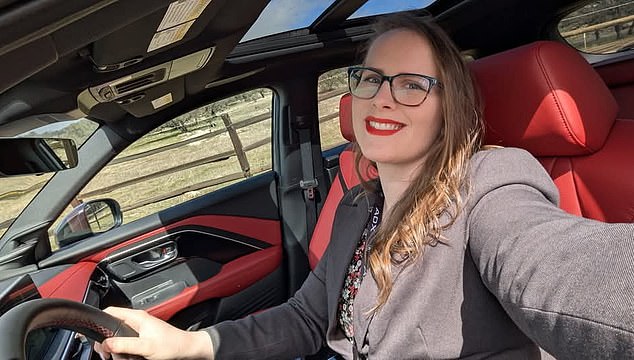Evaluating Modern Car Technology: What’s Worth It?
Car manufacturers are investing billions to integrate advanced technologies into their vehicles, including a multitude of screens, sensors, and AI-driven assistants. While some features enhance safety and convenience, others are falling flat.
Kristen Brown, an automotive reviewer and mother of two young children, shares her insights on the practicality of these innovations. Her unique perspective, gained from hands-on experience with various vehicles, highlights how some high-tech features may not meet the needs of everyday families.
Brown argues that many of the latest technological advancements inflate car prices while offering limited real-life benefits. “I aim to address an audience that’s often overlooked,” she explains, emphasizing the need for practicality in family vehicles.
In-Cabin Refrigerators: A Costly Addition
Luxury SUVs and minivans are increasingly promoting in-cabin refrigerators as premium features. However, Brown finds these expensive additions, like one in a $59,869 Toyota Sienna that costs $735, to be impractical. “They barely keep drinks cool and are cumbersome,” she points out, noting they can even become a tripping hazard when securing car seats.
Built-In Navigation Systems: Are They Necessary?
The automotive industry widely adopts massive infotainment screens, but many manufacturers still insist on incorporating their own navigation systems. Brown questions this redundancy, suggesting that drivers would benefit more from seamless connectivity with Apple CarPlay and Android Auto. While built-in navigation can assist electric vehicles, she believes third-party apps are often more reliable for gas-powered cars.
Voice Recognition: More Trouble Than It’s Worth
To minimize distractions, many automakers are introducing voice commands. Yet, Brown has found that these systems frequently misinterpret commands. In her experience test-driving the Kia Carnival, she faced significant issues with the voice recognition, making simple commands a frustrating experience. “Often, it starts listening at inappropriate times, causing even more distraction,” she reveals.
Ventilated Seats: A Questionable Upgrade
While cooled seats are appealing to some drivers, Brown remains skeptical. Unlike heating elements that provide immediate warmth, ventilated seats offer only minimal cooling, which she feels doesn’t justify the typically high price tag. Moreover, she warns that the internal fans are prone to malfunction, making repairs costly.
Wireless Phone Charging: A Double-Edged Sword
Modern cars are now integrating wireless charging pads, designed to keep phones accessible. However, Brown warns that these pads often lead to overheating, which can damage battery health. “They’re completely impractical,” she asserts, although she applauds Toyota for incorporating a shutdown feature in some models, enabling safe storage without overheating.
Leading Car Warnings: A Generational Divide
One feature Brown appreciates is the leading car warning system that alerts drivers when the vehicle in front begins to move at a red light. This is particularly beneficial for parents juggling restless toddlers. However, she mentions that this technology is not universally loved, with some older generations feeling uneasy about how cars monitor driving habits.
Ultimately, as car technology evolves, it’s essential for consumers—especially families—to critically evaluate which features truly enhance their driving experience. Brown’s insights serve as a valuable guide for those navigating the often overwhelming world of automotive advancements.
